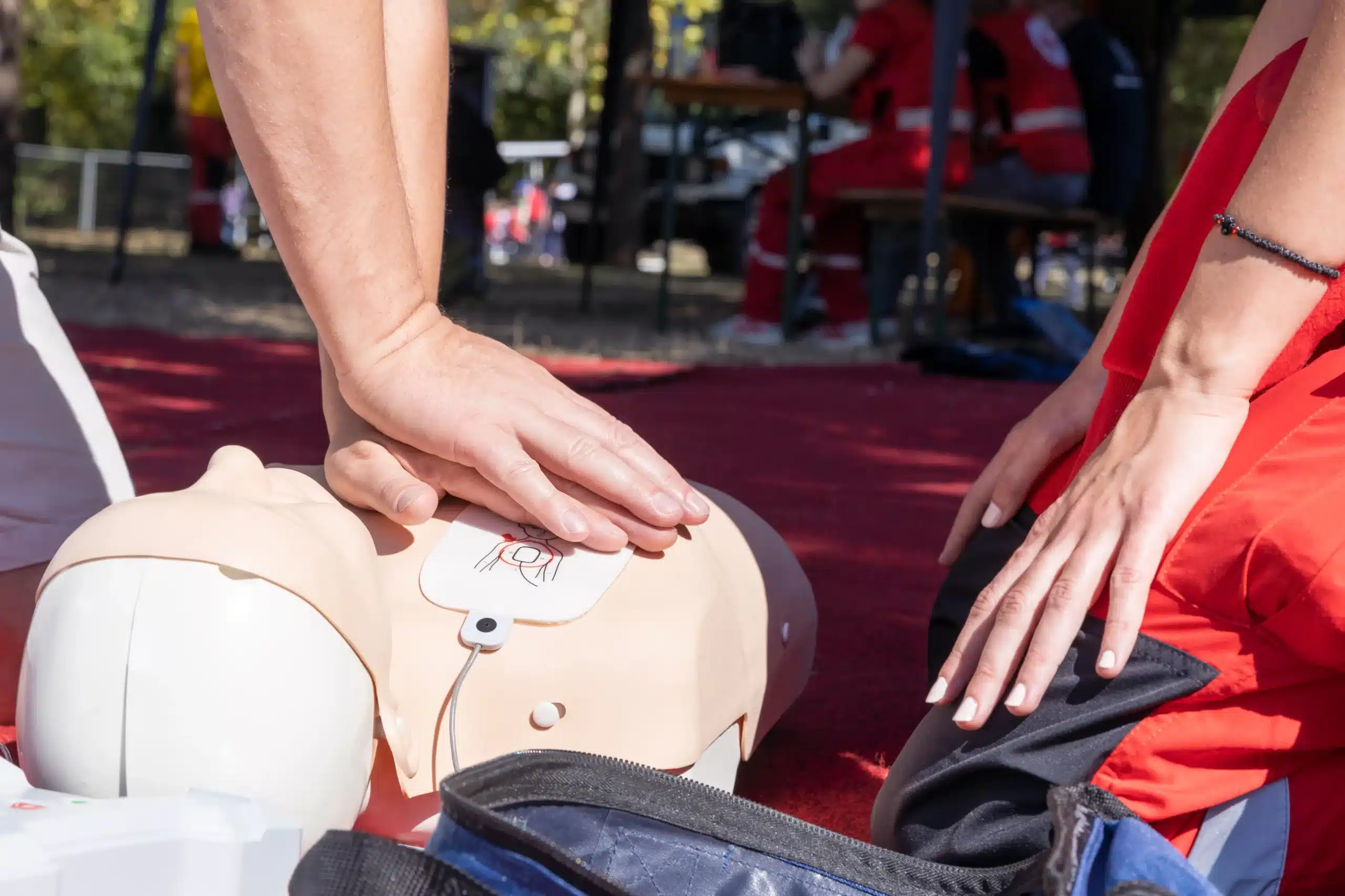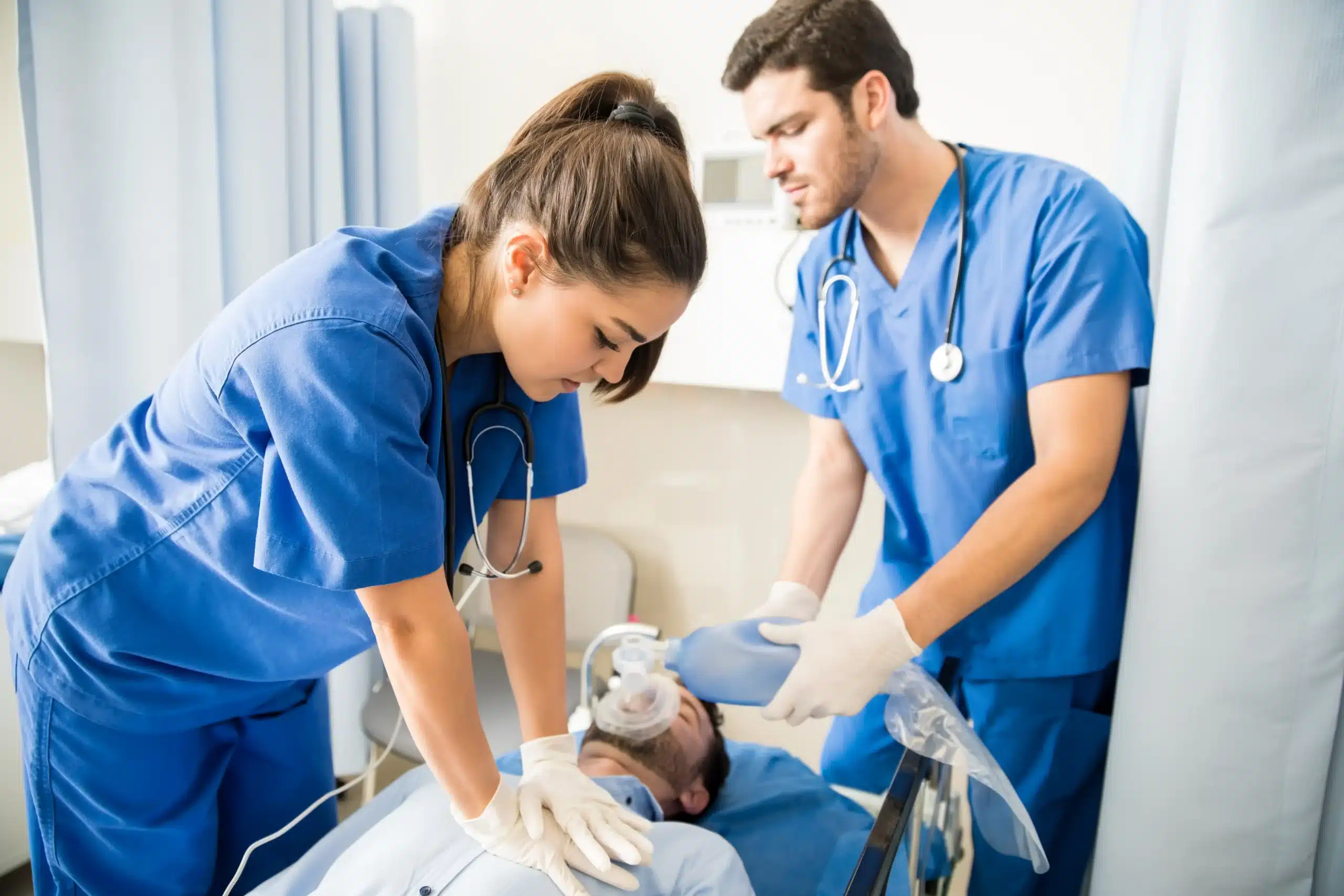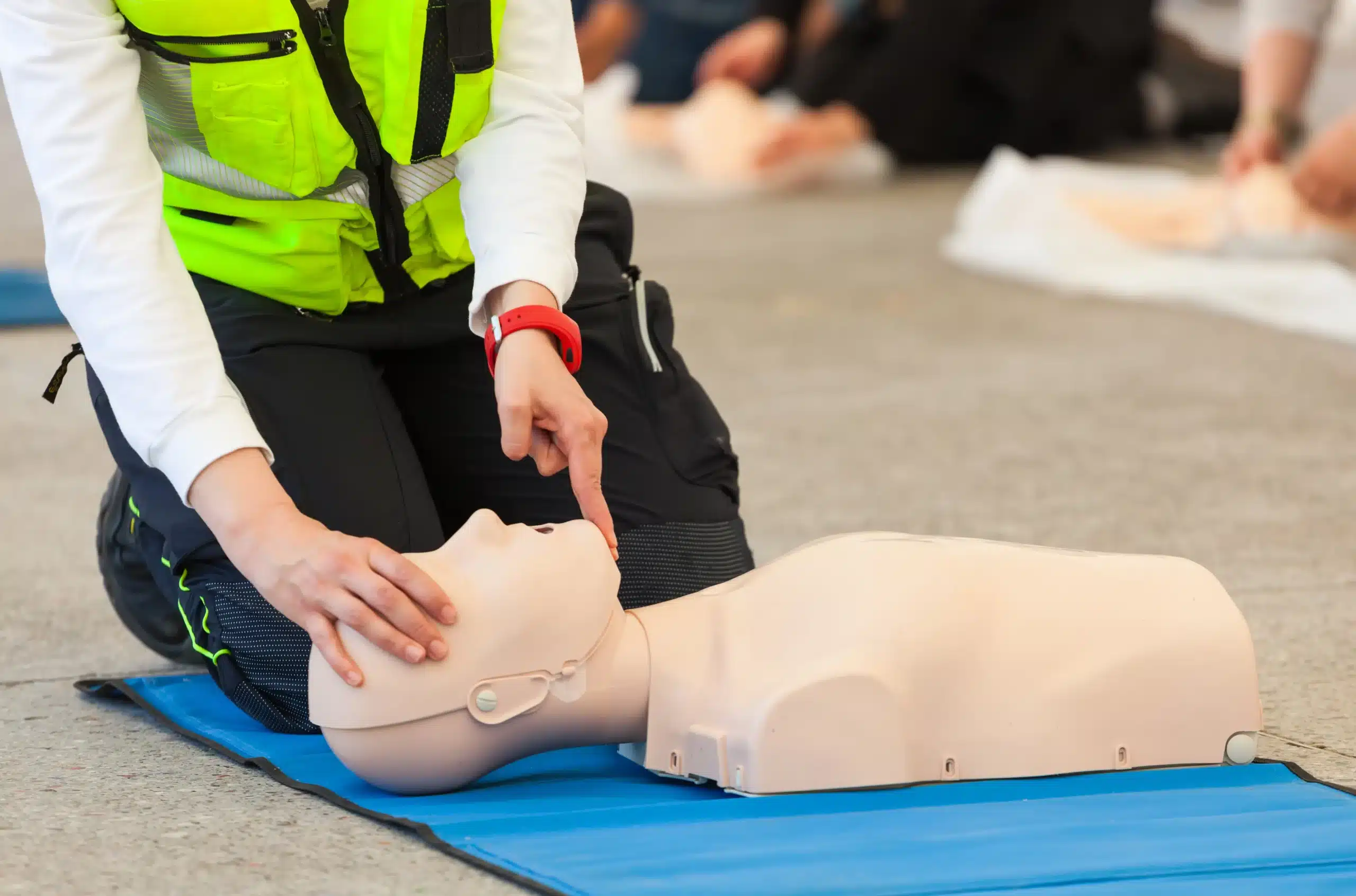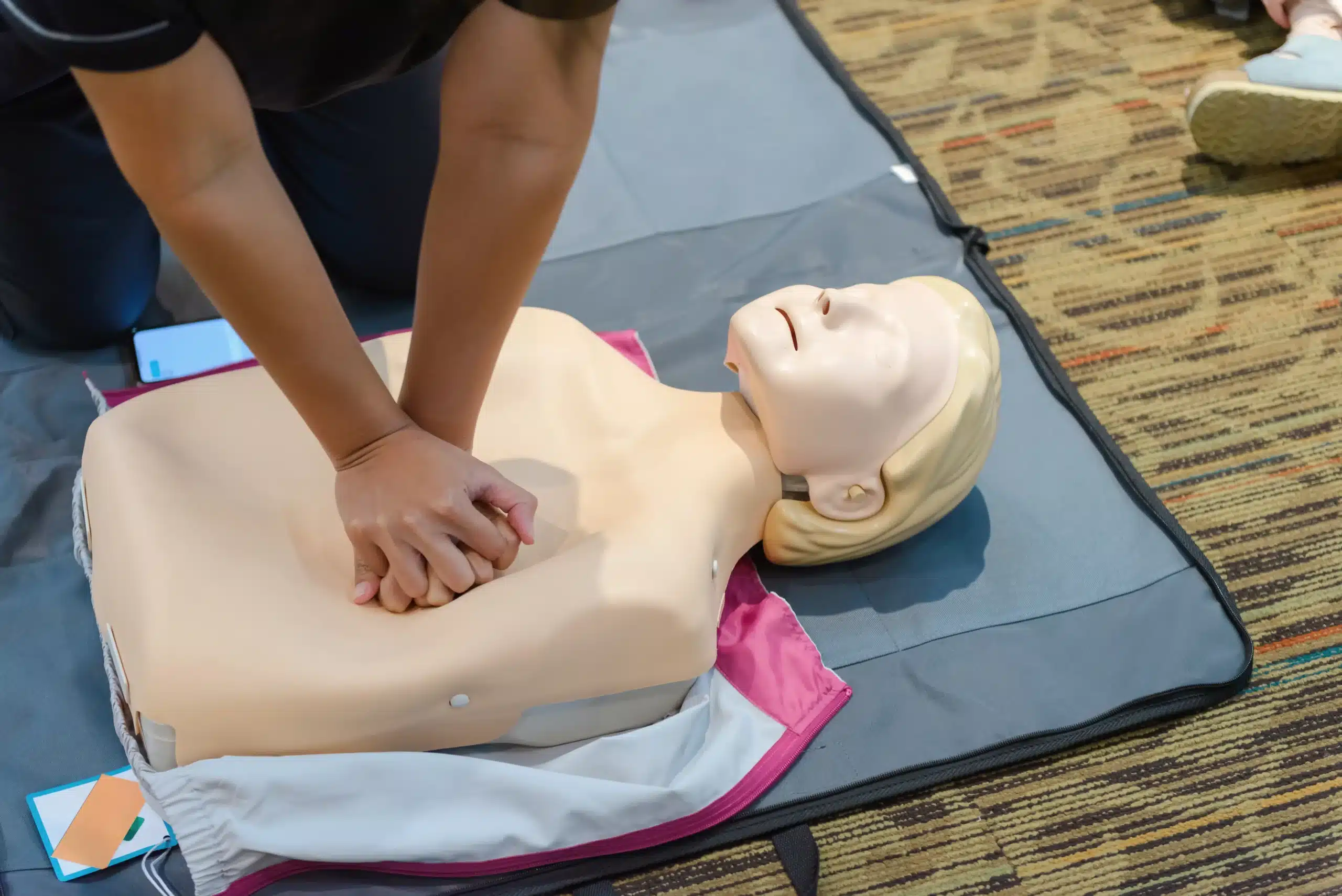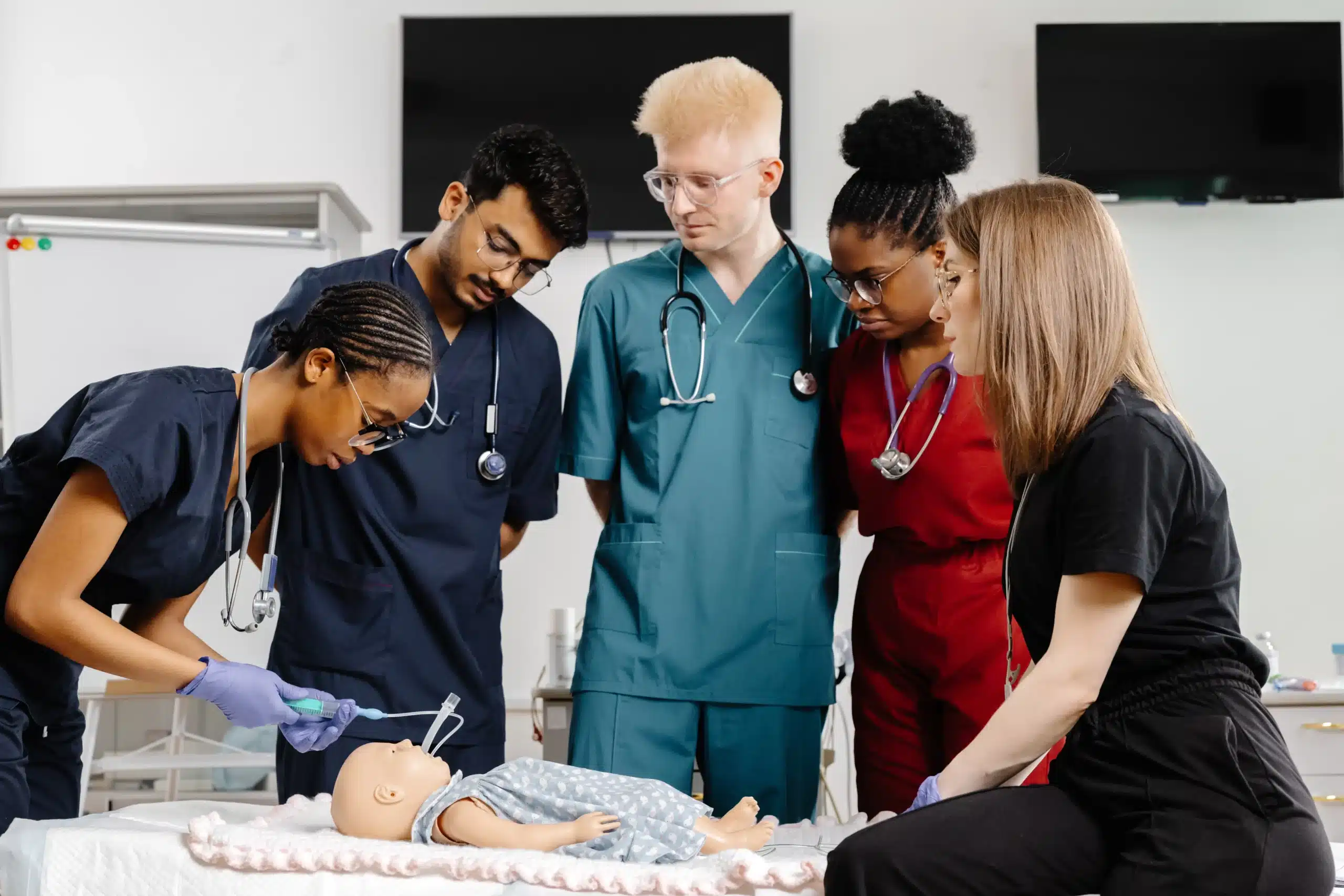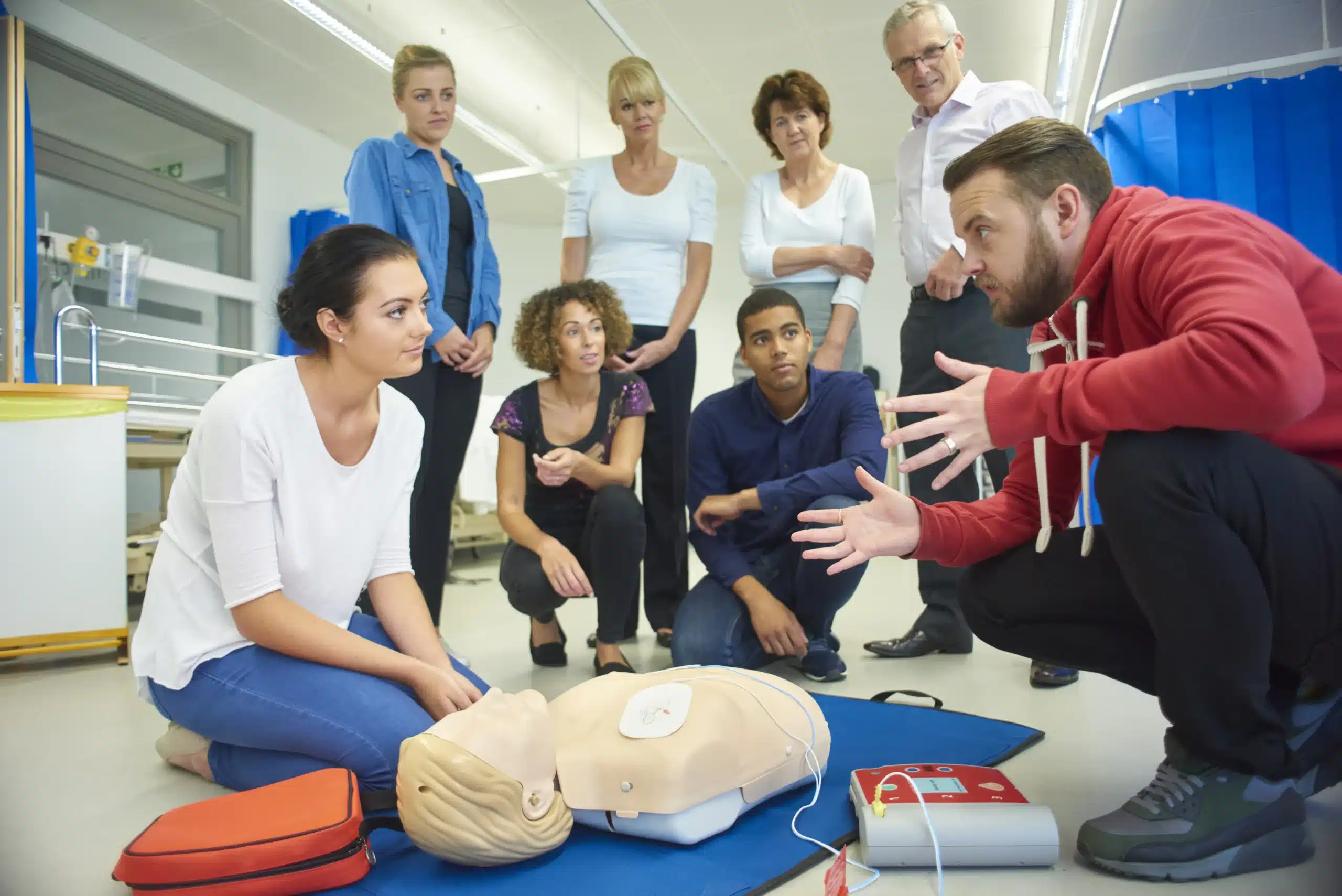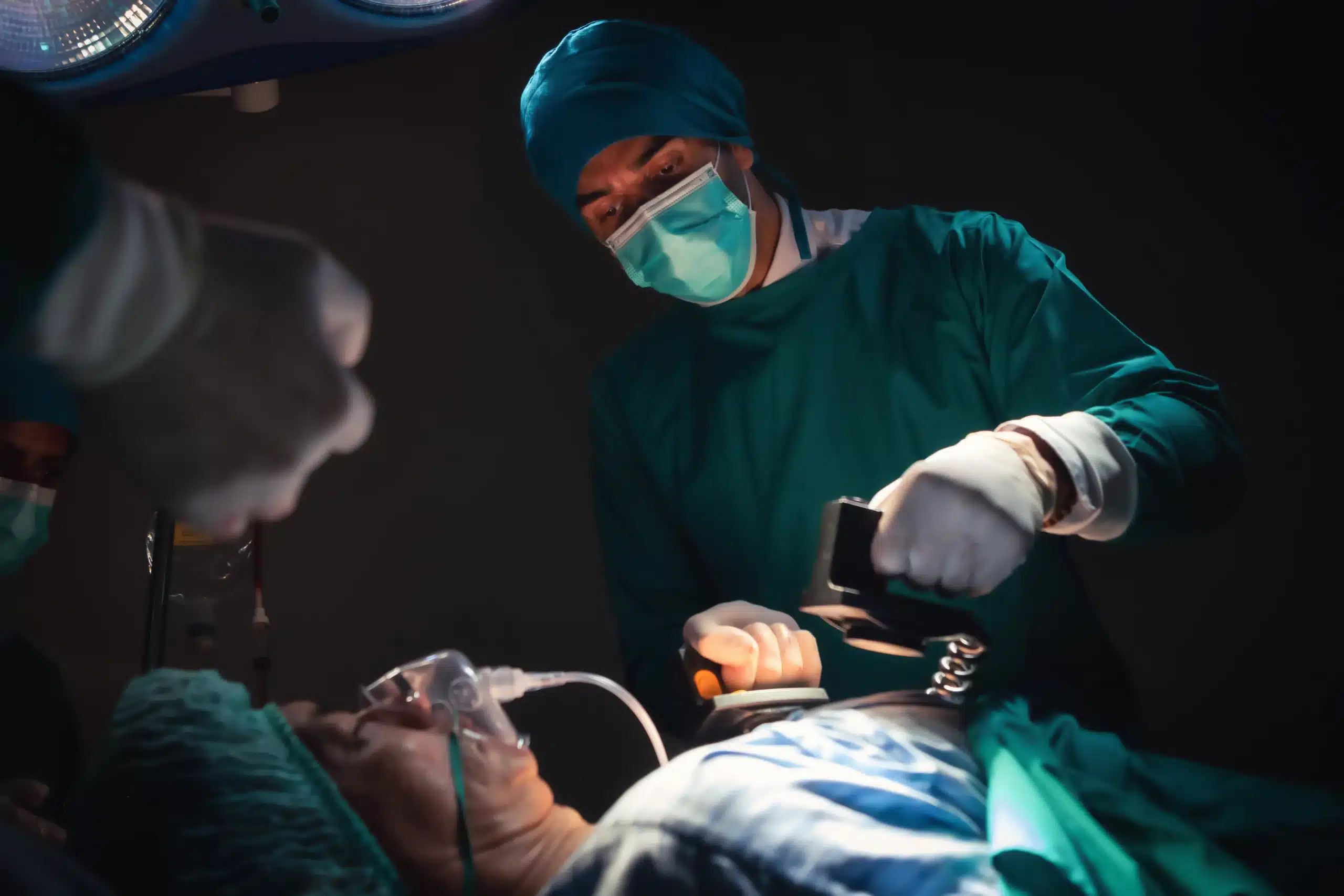In a medical emergency, knowing what to do can make all the difference. BLS training empowers you to provide critical care until professional help arrives, potentially saving a life. If you’re searching for “bls training near me,” this article will guide you through the process of finding the right program and mastering these essential skills. We’ll cover everything from the core components of BLS training to different learning formats, costs, and certification validity. Whether you’re a healthcare provider, a caregiver, or simply someone who wants to be prepared, this guide will help you take the first step towards becoming BLS certified.
Key Takeaways
- BLS training provides essential life-saving skills: From CPR and AED use to recognizing the signs of a heart attack, BLS certification equips you to respond confidently in medical emergencies. Choose a course format – in-person, online, or blended – that fits your lifestyle.
- Finding the right program involves several key considerations: Look for reputable organizations like the AHA or Red Cross, check instructor qualifications, and explore convenient scheduling options. Student reviews and testimonials can offer valuable insights.
- Maintaining your BLS skills is an ongoing process: Regular practice and refresher courses are vital for retaining these critical skills. Explore resources like the AHA’s website and local training providers for continuing education opportunities.
What is BLS Training and Why Do You Need It?
Basic Life Support (BLS) training gives you the skills to respond to life-threatening emergencies. It’s more than just CPR—BLS certification covers a range of interventions, from recognizing respiratory distress to using an AED. Whether you’re a healthcare professional or want to be prepared for anything, BLS training gives you the confidence to act quickly and effectively when it matters most. These skills can significantly impact the outcome of a medical emergency.
Key BLS Skills
In a BLS course, you’ll learn essential skills like CPR, using an AED, and relieving choking. The training also covers how to recognize the signs of a heart attack or stroke and provide appropriate care until professional help arrives. BLS training emphasizes effective team dynamics and clear communication, which are crucial for smooth coordination during emergencies. This includes understanding each team member’s roles and how to communicate information clearly and accurately.
Who Should Get BLS Certified?
BLS certification is often required for healthcare providers, first responders, and other professionals. However, it’s beneficial for anyone who wants to be prepared to help in a crisis. Parents, teachers, coaches, and caregivers can gain valuable skills and confidence from becoming BLS certified. Even if you never use these skills, the peace of mind that comes with being prepared is invaluable. Knowing you can handle a critical situation can empower you daily.
Find Top BLS Training Near You
Finding the right BLS training program is crucial for mastering these life-saving skills. Here are some places to explore:
Safety Training Seminars
Safety Training Seminars offers a range of American Heart Association (AHA) courses, including BLS certification, to prepare you for medical emergencies. Their training covers essential life-saving skills such as CPR, AED use, and airway management, ensuring you can respond confidently in critical situations. They also offer a convenient Northern California CPR directory to help you locate classes. Plus, check out their low price guarantee. For a fast and efficient certification process, Safety Training Seminars features the modern AHA RQI program; learn more about their RQI classes. Contact them to learn more.
American Red Cross
The American Red Cross provides BLS certification and renewal courses tailored for healthcare providers. These courses cater to both new learners and those seeking recertification, ensuring participants are well-prepared for emergencies. They offer classes across the country, making it easy to find one near you.
American Heart Association
The American Heart Association itself often lists certified training centers on its website. Searching their site can connect you with reputable providers offering high-quality BLS instruction.
Local Hospitals and Medical Centers
Local hospitals often provide BLS training for their staff and sometimes extend these courses to the public. Check with hospitals in your area to see if they offer BLS certification courses. These programs are typically aligned with the latest guidelines and taught by experienced healthcare professionals.
Community Colleges and Universities
Many community colleges and universities offer BLS training as part of their health sciences programs. These courses are often open to the community, even if you’re not enrolled in a degree program. Contact your local community college or university to inquire about BLS training opportunities.
BLS Training: Formats, Costs, and Duration
BLS training equips you with crucial life-saving skills applicable in various emergencies. Whether you’re a healthcare professional or simply want to be prepared, understanding the different BLS training formats, costs, and durations will help you choose the best option. We’ll break down each format, explore pricing, and discuss what to expect regarding time commitment.
In-Person Training
In-person BLS training offers a structured, hands-on learning experience. Led by a certified instructor, you’ll learn essential skills like CPR, using an AED, and airway management techniques. This format allows for real-time feedback and the opportunity to practice with other students, building your confidence and proficiency. For those who prefer interactive learning and personalized guidance, in-person training is an excellent choice. Safety Training Seminars offers in-person BLS training throughout Northern California.
Online Courses
Online BLS courses provide the ultimate flexibility. You can study at your own pace, whenever and wherever it’s convenient. This format is particularly beneficial for busy individuals juggling multiple commitments. Many online courses are nationally accepted and offer comprehensive training. Keep in mind that online learning requires self-discipline and motivation to complete the material independently.
Blended Learning
Blended learning combines the convenience of online modules with the practical application of in-person skills sessions. You’ll learn the theoretical aspects of BLS online, then attend a hands-on session to practice and refine your skills with a certified instructor. Research suggests that blended learning can be highly effective for retaining knowledge and mastering essential skills. This format often provides a more cost-effective solution compared to exclusively in-person training.
Pricing and Discounts
The cost of BLS certification varies depending on several factors, including location, training provider, and the specific course type. It’s always a good idea to compare prices from different providers and look for potential discounts. Safety Training Seminars offers competitive pricing and a low-price guarantee on their AHA-certified courses.
Course Length and Certification Validity
BLS Provider courses typically require about 4.5 hours to complete, encompassing both skills practice and testing. Renewal courses are generally shorter, taking approximately 3 hours. The American Heart Association offers detailed information on course lengths and certification validity. Be sure to check the specific requirements for your profession or organization, as renewal periods can vary.
What Happens in a BLS Course?
BLS certification courses cover essential life-saving skills, from CPR and AED use to airway management. Whether you’re a healthcare professional or preparing for a non-medical role, like childcare or coaching, the curriculum equips you to respond confidently in medical emergencies. You’ll learn how to recognize the signs of a cardiac arrest, give high-quality chest compressions, provide rescue breaths, and use an automated external defibrillator (AED). Many courses also cover choking relief and basic first aid.
Hands-on Practice and Skills Assessment
BLS courses aren’t just about lectures. Expect significant hands-on practice using mannequins and AED trainers. This practical training is crucial for building muscle memory and confidence. Your instructor will guide you through various scenarios, providing feedback and ensuring you perform each skill correctly. Most courses include a skills assessment to confirm your competency before you receive your BLS certification. This typically involves demonstrating your proficiency in CPR, rescue breathing, and AED use.
Common Challenges and Solutions
While BLS courses are designed to be straightforward, some students face challenges. One common issue is the online portion of some blended learning courses. Some students have reported technical difficulties and outdated animations that can make online modules frustrating. If you experience technical issues, reach out to your course provider’s technical support team. For content-related questions, don’t hesitate to ask your instructor for clarification. They are there to support you. In-person courses can sometimes present scheduling challenges. Look for providers like Safety Training Seminars that offer flexible scheduling options to accommodate busy schedules. Check our Northern California CPR directory for more options.
Retention Strategies and Ongoing Support
Maintaining your BLS skills is just as important as learning them initially. Studies show that skills retention declines over time, which is why refresher courses are so important. The World Health Organization recommends annual BLS training, starting as early as age 12. Many organizations offer refresher courses or recertification programs like our RQI classes to help you stay up-to-date. Regular practice and review of the material can also significantly improve long-term retention. Some studies suggest that pre-training evaluations and feedback can further enhance knowledge retention, so don’t be afraid to ask your instructor for personalized guidance. Contact us if you have any questions about our programs.
Choose the Right BLS Training
Finding the right BLS training involves several key factors. It’s not just about learning the skills—it’s about finding a program that fits your learning style, schedule, and budget. Here’s what to look for:
Accreditation and Instructor Qualifications
First and foremost, ensure your chosen program is accredited by a reputable organization like the American Heart Association or the American Red Cross. This guarantees the curriculum meets national standards and your certification will be widely recognized. Safety Training Seminars offers a variety of American Heart Association courses, ensuring your training aligns with the latest guidelines. Equally important are the instructors. Look for certified instructors with extensive experience, ideally in healthcare settings. Their practical insights and real-world examples can significantly enhance your learning.
Scheduling and Convenience
Life gets busy, so finding a course that fits your schedule is crucial. Consider factors like class times, location, and course format. Do you prefer weekend classes, evening sessions, or the flexibility of online learning? Some providers, like the Red Cross, emphasize practical skills and real-world scenarios in their training, but their schedules may vary by location. If you’re in Northern California, the Northern CA CPR Directory can help you find local options.
Facility and Equipment
Hands-on practice is a cornerstone of effective BLS training. A well-equipped facility with up-to-date mannequins, AED trainers, and other simulation tools can significantly improve your learning experience. This practical training is essential for mastering skills like CPR and airway management. When choosing a provider, inquire about their facilities and equipment to ensure you’ll have ample opportunity to practice in a realistic environment. ACLS.com highlights the importance of BLS training for healthcare providers.
Student Reviews and Testimonials
Before committing to a course, take the time to read reviews and testimonials from past students. These firsthand accounts can offer valuable insights into the quality of instruction, the learning environment, and the overall experience. Websites like AllNurses.com often feature discussions about various BLS programs. While individual experiences can vary, reviews can give you a general sense of what to expect. Don’t hesitate to contact the training provider directly with any questions. Choosing the right BLS training is an investment in your skills and confidence.
Related Articles
- BLS Classes in Sacramento: A Complete Guide
- Basic Life Support (BLS) in Berkeley CA: Top Courses
- BLS Courses in Oakland: A Certification Guide
- BLS Certification Berkeley: Your 2024 Guide – San Francisco Bay Area CPR Classes
- BLS Renewal Near Me: Find the Right Course – San Francisco Bay Area CPR Classes
Frequently Asked Questions
What’s the difference between CPR and BLS? CPR is a specific technique used in BLS, but BLS covers a broader range of life-saving interventions, including using an AED, relieving choking, and recognizing the signs of serious medical conditions like heart attacks and strokes. Think of BLS as a comprehensive toolkit, with CPR being one of the most important tools.
How long does BLS certification last, and how do I renew it? BLS certification typically lasts for two years. Renewal involves taking a refresher course, which is often shorter than the initial certification course. Check with your certifying organization or employer for specific renewal requirements. Some organizations offer streamlined renewal processes, like the RQI program, which can be more convenient than traditional classroom-based renewals.
Is online BLS training as effective as in-person training? Both online and in-person BLS training can be effective, but they cater to different learning styles. Online training offers flexibility, while in-person classes provide hands-on practice and direct interaction with an instructor. Blended learning, which combines online modules with in-person skills sessions, offers a balance of both. The best format for you depends on your learning preferences and schedule.
What if I don’t work in healthcare? Is BLS training still relevant for me? Absolutely! While BLS certification is often a requirement for healthcare professionals, these life-saving skills are valuable for anyone. Parents, teachers, coaches, caregivers, and anyone who wants to be prepared for an emergency can benefit from BLS training. Knowing how to respond effectively can make a critical difference in any situation.
How do I find a reputable BLS training provider near me? Start by checking with nationally recognized organizations like the American Heart Association and the American Red Cross. They often list certified training centers on their websites. You can also search online for local providers and check with hospitals, community colleges, and universities in your area. Look for providers with accredited programs, experienced instructors, and positive student reviews.


